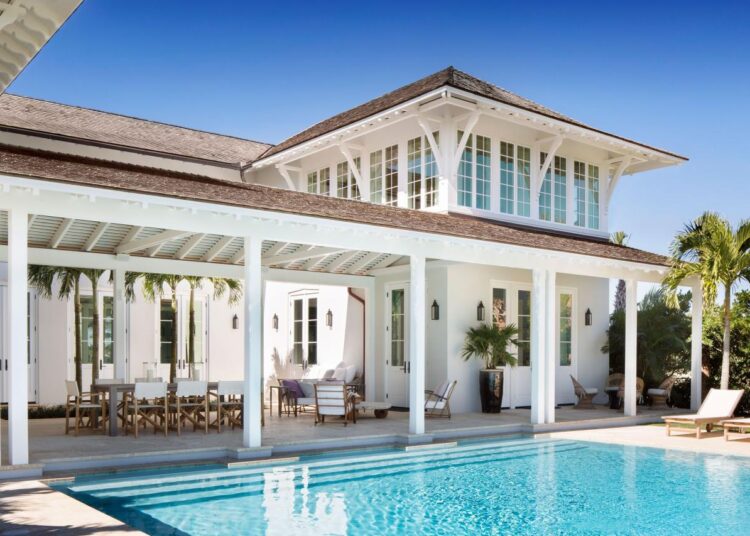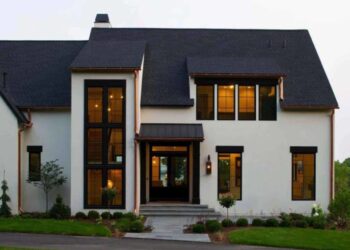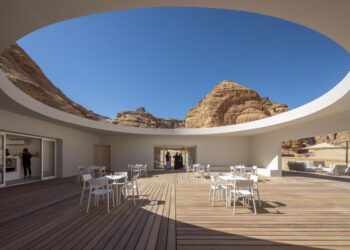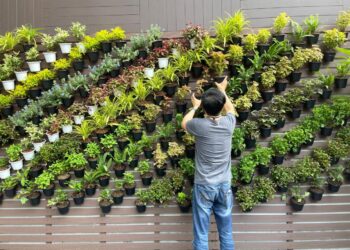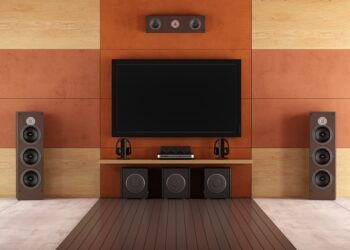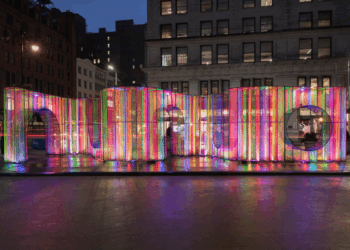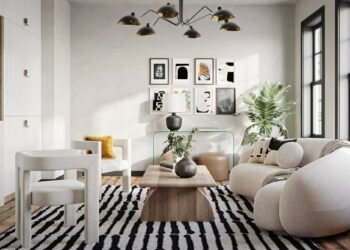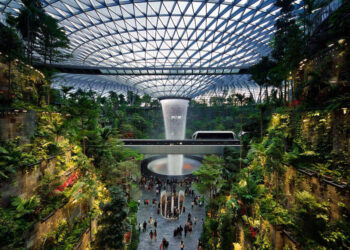In the ever-evolving landscape of modern design, a singular, powerful philosophy has risen to prominence: Aesthetic Functionality. This isn’t merely about creating beautiful objects or spaces; it’s about the profound marriage of form and purpose, where visual appeal doesn’t just coexist with utility, but actively enhances it. It’s a deliberate rejection of superficial ornamentation for the sake of beauty, advocating instead for a deeper, more intentional approach where every design element serves a practical purpose while simultaneously elevating the overall aesthetic. This pervasive principle now dominates across industries, from product development to architectural marvels, reshaping our environments and interactions to be both effortlessly beautiful and inherently effective. It’s a testament to the belief that true elegance lies in intelligent design.
Why Function Inspires Beauty
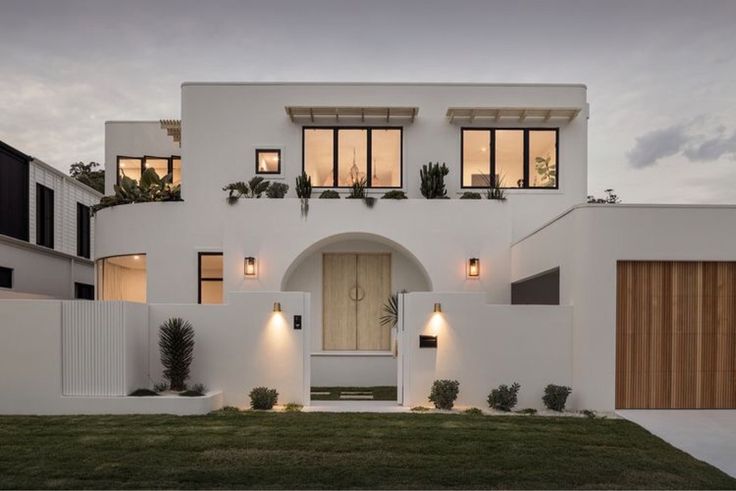
The rise of aesthetic functionality as a guiding design principle isn’t a recent invention. It’s a culmination of historical movements, technological advancements, and a growing appreciation for efficiency and clarity. Understanding its roots helps explain its enduring dominance.
A. Early Functionalism (Late 19th – Early 20th Century):
A. “Form Follows Function”: Attributed to architect Louis Sullivan, this seminal idea laid the groundwork. It posited that the shape of a building or object should primarily be determined by its intended purpose. This was a radical departure from ornate, purely decorative styles of previous eras. Think of early skyscrapers where the structure directly expressed its internal steel frame, rather than being cloaked in classical ornamentation.
B. Industrial Revolution Influence: Mass production necessitated designs that were efficient to manufacture, durable, and easily replicable. This naturally led to simpler, more functional forms. As machines took over production, ornate, hand-carved details became costly and impractical, pushing designers towards streamlined, repeatable aesthetics.
C. Bauhaus School: This influential German art and design school (1919-1933) famously championed functionalism, minimalism, and the integration of art and craft with industrial production. They believed that well-designed objects should be accessible, practical, and aesthetically pleasing, setting a precedent for modern design. Walter Gropius, the founder, envisioned a total work of art where all arts and crafts, including architecture, merged to create a new aesthetic that served human needs.
B. Mid-Century Modernism:
A. Post-War Efficiency: Following World War II, there was a global need for practical, affordable, and well-designed homes and products. Designers like Charles and Ray Eames, Arne Jacobsen, and Eero Saarinen created iconic pieces that perfectly blended ergonomic comfort with sleek, timeless aesthetics. Their designs prioritized natural materials, clean lines, and an organic simplicity that made them adaptable to various environments.
B. Material Innovations: Advances in materials like plywood, fiberglass, and plastics allowed for new forms that were both strong and visually appealing, enabling designers to push functional boundaries while maintaining elegance. These new materials allowed for curves and fluid shapes that were difficult or impossible with traditional materials, further integrating form and function.
C. Japanese Aesthetics (Wabi-Sabi and Minimalism):
A. Understated Elegance: Traditional Japanese aesthetics, particularly Wabi-Sabi, celebrate imperfection, transience, and humble materials. It finds beauty in utility, age, and natural processes, which inherently aligns with the idea that functionality can possess deep aesthetic value. A perfectly worn wooden floor or a handcrafted ceramic bowl with a slight imperfection is prized for its authenticity and history of use.
B. Zen Simplicity: The influence of Zen Buddhism promotes clarity, emptiness (Ma), and the removal of the unnecessary, allowing the essential beauty of an object or space to emerge through its purity and purpose. This philosophy cultivates a mindful appreciation for the functionality of objects and spaces, rather than distracting with superfluous adornment.
D. The Digital Age and User Experience (UX):
A. Intuitive Interfaces: In software and web design, aesthetic functionality is critical. Clean, visually appealing interfaces that are easy to navigate and understand directly enhance usability and user satisfaction. Complex, cluttered designs lead to frustration, where users cannot find the functionality they need.
B. Ergonomic Imperatives: The rise of human-computer interaction put a premium on ergonomic design. A mouse or keyboard not only needs to look good but must feel comfortable and support natural hand positions to be truly effective over long periods of use. The aesthetic of a comfortable, well-designed peripheral often reflects its underlying ergonomic intelligence.
C. Seamless Interaction: Modern products, from smartphones to smart home devices, are designed to be beautiful objects that integrate seamlessly into our lives, their aesthetic often indicating their intuitive functionality. For example, the minimalist design of a smart speaker subtly communicates its voice-activated simplicity, making it inviting to use.
The Interplay of Beauty and Purpose
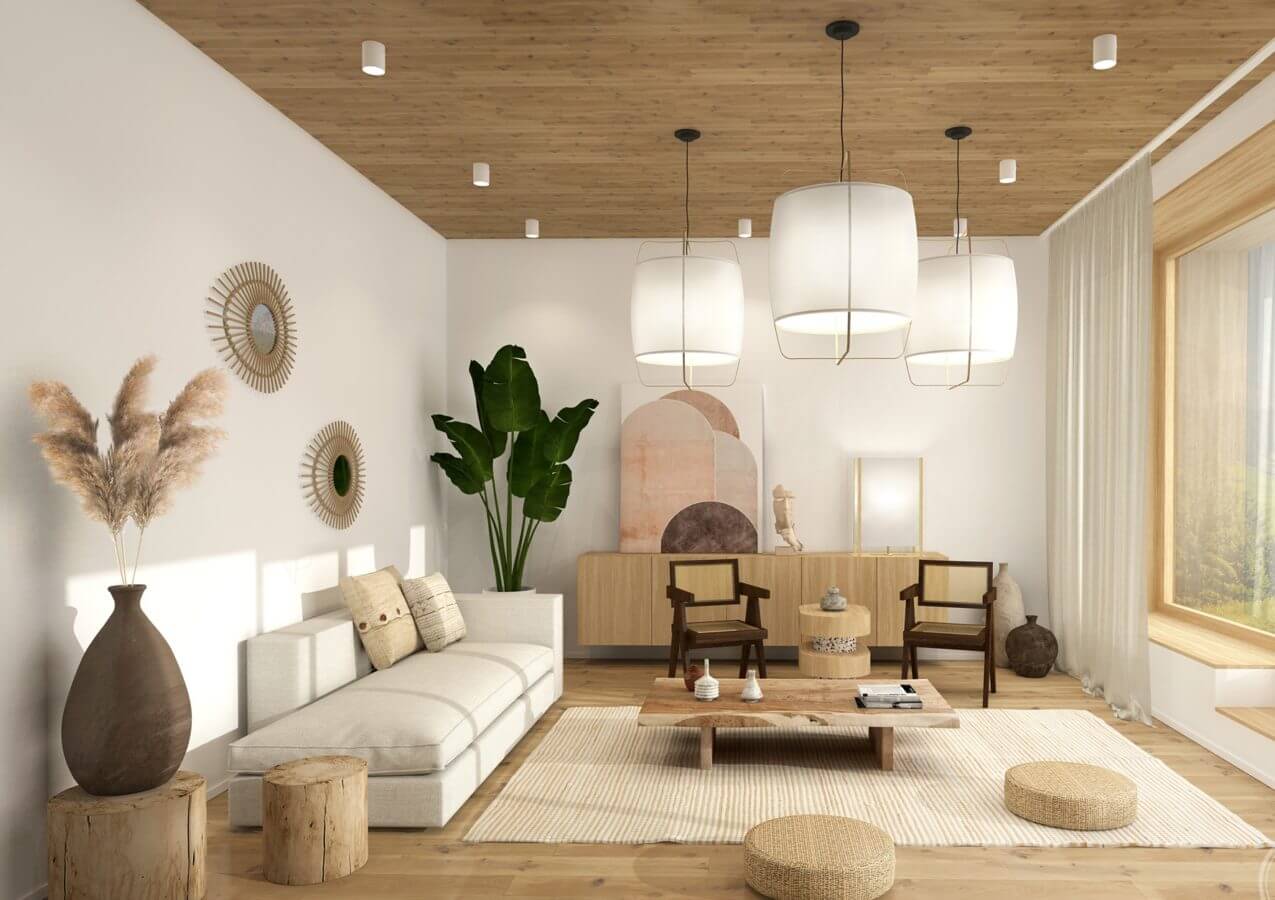
Aesthetic functionality is guided by a set of interconnected principles that ensure every design choice contributes to both visual appeal and practical utility.
A. Simplicity and Clarity
Stripping away the superfluous to reveal the essential. This means that elements are not just minimal, but meaningfully minimal.
A. Elimination of Excess: Removing unnecessary ornamentation, decorative elements, or features that do not enhance function or communicate meaning. Every element must earn its place; if it doesn’t contribute to the purpose or beauty, it’s removed. This forces designers to be highly intentional about every inclusion.
B. Clean Lines and Forms: Prioritizing straightforward, geometric shapes and uninterrupted lines that create a sense of order, elegance, and visual calm. This makes products and spaces feel intuitive and efficient, as there are no visual distractions to impede understanding of their form or function.
C. Visual Hierarchy: Organizing elements in a way that guides the user’s eye, making the most important functional aspects immediately apparent. In a website, this means clear calls to action; in a product, it means controls are intuitive and visible; in a room, it means the focal point is clear and purposeful.
B. Purposeful Material Selection
Materials are chosen not just for their look but for their inherent properties that serve function and enhance aesthetics. The choice of material becomes an integral part of the design message.
A. Honesty of Materials: Allowing materials to express their natural characteristics rather than masking them. Wood is celebrated for its grain and warmth, concrete for its raw texture, and metal for its clean sheen. This approach fosters authenticity and reduces the need for artificial finishes.
B. Durability and Longevity: Selecting materials that are robust and can withstand wear and tear, ensuring the product or space maintains its function and aesthetic appeal over time. A design that looks great but quickly breaks or degrades is not truly aesthetically functional. This principle also strongly aligns with sustainability by reducing waste.
C. Tactile Qualities: Considering how materials feel to the touch. A smooth, cool metal, a warm textured wood, or soft fabric all contribute to the sensory experience and user comfort, which is part of function. This sensory feedback enhances the overall experience of using or inhabiting the design.
D. Material Performance: Choosing materials based on their thermal properties, acoustic dampening, resistance to elements, or ease of cleaning, all of which contribute to the practical effectiveness of the design. For example, sound-absorbing panels might be chosen not just for their acoustic function but also for their subtle texture and visual rhythm.
C. Ergonomics and User Experience (UX)
This is the direct link between human interaction and design, where the design adapts to the user, not vice-versa.
A. Intuitive Interaction: Designing products and interfaces that are easy to understand and use, requiring minimal instruction. The design itself should guide the user through its form, layout, and visual cues. A well-designed kitchen tool, for instance, naturally suggests how it should be held and operated.
B. Physical Comfort: Ensuring that furniture, tools, and environments support the human body in natural, comfortable postures, reducing strain and fatigue. This is where ergonomics directly intersects with functionality. A chair that supports the spine effectively also embodies an aesthetic of care and intelligent design.
C. Accessibility: Designing for all users, regardless of ability, ensuring that the functionality is accessible and the aesthetic doesn’t impede usability for anyone. This means considering universal design principles, where ramps are integrated seamlessly into pathways, and controls are reachable by all.
D. Feedback Mechanisms: Providing clear, immediate feedback to the user when an action is performed (e.g., a button click with a satisfying tactile response, a light turning on, a digital interface showing progress). This builds trust, confirms functionality, and makes the interaction feel complete.
D. Integrated and Seamless Solutions
Concealing complex mechanisms to create an uncluttered, streamlined experience, making the functional elements appear effortless.
A. Hidden Components: Wiring, vents, storage, and even appliances are often integrated flush with surfaces or concealed behind panels, creating clean, uninterrupted lines. This maintains visual calm and allows the user to focus on the task at hand rather than distracting clutter.
B. Multi-Functional Elements: Designing single pieces that serve multiple purposes (e.g., a wall unit that integrates storage, seating, and a hidden desk; a staircase that incorporates bookshelves). This maximizes efficiency in limited spaces and reinforces the idea of intelligent design.
C. Flow and Continuity: Creating a sense of effortless movement and visual continuity within a space, where transitions between areas or components feel natural and unforced. This can involve consistent material palettes, aligned sightlines, or seamless architectural connections.
Aesthetic Functionality in Architectural Design
Buildings are designed not just as shelters but as efficient, beautiful machines for living and working, where every structural and aesthetic choice serves a purpose.
A. Sustainable Architecture: Green buildings integrate passive solar design (e.g., strategic window placement, overhangs), natural ventilation systems (e.g., operable windows, thermal chimneys), and renewable energy systems (e.g., solar panels) not only for eco-friendliness but also for elegant solutions that enhance comfort and reduce operational costs. A solar panel array that’s seamlessly integrated into a roof, for instance, is both highly functional as an energy generator and contributes to a modern, technologically advanced aesthetic.
B. Minimalist Architecture: Characterized by clean lines, open spaces, and a focus on essential forms, where every structural element serves a purpose and contributes to the overall minimalist aesthetic. Think of the serene concrete forms of Tadao Ando, where light and shadow become integral functional and aesthetic elements, or the precise material compositions of John Pawson, where the beauty lies in the absolute clarity of space and form.
C. Flexible Layouts: Offices and homes designed with movable partitions, modular components, and adaptable furniture allow spaces to transform for various uses, embodying functionality through adaptability while maintaining a coherent aesthetic. This adaptability becomes a core functional feature that also looks sophisticated.
D. Daylighting: Strategic placement of windows, skylights, and light shelves not only illuminates spaces naturally, reducing the need for artificial lighting (function), but also creates dynamic patterns of light and shadow, enhancing the visual experience (aesthetics). A well-lit space feels more inviting and contributes to well-being.
Benefits of Aesthetic Functionality
Embracing aesthetic functionality yields a compelling array of advantages for users, businesses, and the environment.
A. Enhanced User Experience and Satisfaction
A. Intuitive Use: Designs that are both beautiful and functional are inherently easier and more enjoyable to use, requiring less effort and thought. This leads to higher user satisfaction and a feeling of empowerment.
B. Reduced Cognitive Load: Clean, uncluttered designs make information easier to process and tasks simpler to perform by eliminating unnecessary distractions. This reduces mental fatigue, allowing users to focus on the task at hand.
C. Increased Engagement: A visually appealing and well-functioning product or space is more engaging, encouraging prolonged and repeated interaction. Users are more likely to adopt and consistently use designs that are a pleasure to interact with.
D. Emotional Connection: Designs that are thoughtfully crafted and perform flawlessly often evoke positive emotions like delight, trust, and even affection, building a stronger, more loyal connection between the user and the product/space.
B. Improved Productivity and Efficiency
A. Streamlined Workflows: Well-designed tools and environments facilitate smoother, more efficient processes, whether it’s an organized home office that promotes focus or a factory floor laid out for optimal movement.
B. Reduced Errors: Clear, intuitive interfaces minimize confusion and potential mistakes, especially in complex operations where errors can be costly or dangerous.
C. Better Focus: Uncluttered, aesthetically pleasing environments reduce distractions, allowing for greater concentration and productivity in both work and leisure activities.
D. Ergonomic Benefits: Designs that support the human body reduce physical discomfort and fatigue, allowing users to work or interact with products longer, more comfortably, and with less risk of injury. This directly translates to sustained productivity.
C. Economic and Business Advantages
A. Increased Market Appeal: Products and spaces that exemplify aesthetic functionality are highly desirable, attracting a broader customer base and often commanding premium pricing due to their perceived quality and value.
B. Stronger Brand Identity: Companies committed to aesthetic functionality often build a reputation for quality, innovation, user-centricity, and sophistication. This fosters deep customer loyalty and differentiates them in competitive markets.
C. Reduced Maintenance and Replacement Costs: Durable materials and timeless designs mean products and buildings last longer, reducing the need for frequent repairs or replacements. This provides significant long-term cost savings.
D. Higher ROI on Design Investment: Investing in integrated design leads to more efficient use of resources, improved user adoption, and better long-term performance, ultimately delivering a strong return on the initial design expenditure.
E. Competitive Differentiation: In crowded markets, aesthetic functionality provides a clear competitive edge, setting products and services apart from those that are merely functional or merely decorative.
D. Sustainability and Environmental Impact
A. Reduced Waste: By prioritizing durability, longevity, and timeless design, aesthetic functionality directly combats planned obsolescence and the throwaway culture, leading to less landfill waste and reduced resource extraction.
B. Efficient Resource Use: Designs that optimize space and functionality often use fewer materials and less energy throughout their lifecycle, from manufacturing to operation.
C. Mindful Consumption: When products are both highly functional and beautiful, users are more likely to value them, care for them, repair them, and keep them for longer, fostering a culture of conscious and responsible consumption.
D. Sustainable Material Choice: The preference for honest, high-quality materials often aligns with sustainably sourced, natural, recycled, or rapidly renewable options, further reducing environmental impact.
Challenges and Considerations in Pursuing Aesthetic Functionality
While highly desirable, achieving true aesthetic functionality isn’t always straightforward and presents its own set of challenges that designers and organizations must navigate.
A. Balancing Constraints: Designers often face the challenge of balancing multiple, sometimes conflicting, constraints: tight budgets, complex manufacturing limitations, limited material availability, and aggressive project deadlines. Achieving optimal functionality and aesthetics simultaneously within these constraints requires exceptional skill and innovative problem-solving.
B. Avoiding Superficiality: A common pitfall is the risk of focusing solely on the “aesthetic” part without deeply integrating “functionality.” This can lead to designs that look impressive but perform poorly or are impractical in real-world use. This “form over function” approach fundamentally betrays the principle of aesthetic functionality.
C. User Research Intensity: Designing truly functional solutions requires a deep understanding of user needs, behaviors, and pain points. This necessitates extensive user research, prototyping, testing, and iteration, which can be time-consuming, resource-intensive, and requires specialized expertise. Without this, functionality can be assumed, not proven.
D. Complexity Behind Simplicity: Achieving a clean, simple, and effortless aesthetic often requires immense underlying complexity in engineering, manufacturing processes, and technological integration to conceal mechanisms and streamline components. This “hidden complexity” can be challenging to manage, requiring advanced technical skills and cross-disciplinary collaboration.
E. Resistance to Change: Clients, stakeholders, or consumers accustomed to more traditional, ornate, or even cluttered designs might initially resist the minimalist or integrated aesthetic that often accompanies functional design. Educating them on the benefits and demonstrating value is crucial.
F. Maintenance and Cleaning: While sleek designs are appealing, some integrated or minimalist solutions can be challenging to repair or clean if not thoughtfully designed for accessibility and easy maintenance. For example, a seamless wall panel might look beautiful but become problematic if a hidden component behind it needs servicing.
The enduring reign of aesthetic functionality signifies a mature understanding of design’s true power. It’s a recognition that beauty is not superficial, but an essential component of usability, desirability, and ultimately, human well-being. By seamlessly weaving utility into elegance, designers are not just crafting objects and spaces; they are shaping experiences, streamlining lives, and contributing to a more sustainable and harmonious world. In an increasingly complex existence, the appeal of designs that are both effortlessly beautiful and profoundly useful will continue to dominate, reminding us that true sophistication often lies in intelligent simplicity.

